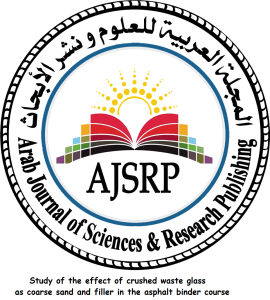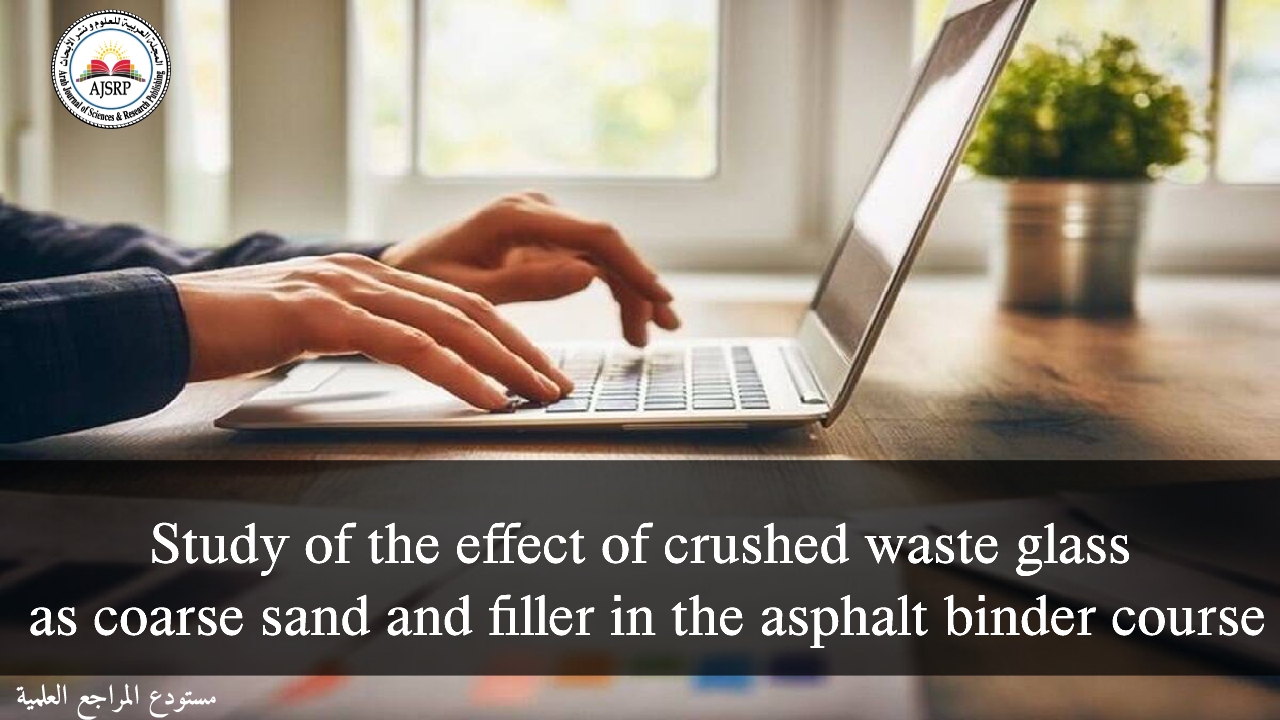study of the effect of crushed waste glass as coarse sand and filler in the asphalt binder course
تأليف: khalil nabil dalloul(اعداد):: shafik jendia(مشرف)
اللغة: إنجليزي
النشر: غزة_فلسطين:المعد 2013
المكان: غزة-المكتبة المركزية-مكتبة الكترونية
النوع: رسائل جامعية
عدد الصفحات:
المواضيع: asphalt – engineering materials:: الخرسانة الاسفلتية
رقم التصنيف: 620.196
الرقم العام: 3102848
العنوان : study of the effect of crushed waste glass as coarse sand and filler in the asphalt binder course

Abstract
Recycling is considered to be one of the most important bases of sustainability. Almost all the products we utilize, whether they are metal, concrete, plastic, wood, or even glass, will eventually turn into wastes that must be disposed.
The best way to deal with these wastes is to recycle and reuse them as raw materials or modifiers.
This will reduce the drain on the natural resources of the raw materials, and it will reduce the spaces used as landfills. Among these wastes is glass, which is widely used in our daily life. However, the disposal of waste glass is not an easy matter.
That is because glass is neither incinerated nor decomposed material. Waste glass has been used in the road construction as an alternative to the aggregates in the hot asphalt mixes in many countries so as to guarantee the sustainable management of the waste glass.
This research studies the effects of crushed waste glass as coarse sand and filler in the asphalt binder course on the properties of Marshall Hot Mix Asphalt. It also compares the glasphalt mix properties with the local and international specifications. Cleaned and crushed, waste glass resulted from glass bottles has been added to the asphalt mixture using a gradation of (0/4.75) mm.
This gradation was the same as the gradation of Trabia (0/4.75) mm aggregate that was alternated to glass. Marshall Method was used to determine the Optimum Binder Content (OBC) and to evaluate the properties of the glasphalt mix.
In total, 33 samples were prepared, 15 of which have been used to determine the OBC, and the rest have been used to find out the effects of adding different percentages of crushed waste glass to the asphalt mixture. Examining Marshall samples showed that the OBC of bitumen ought to be 5.1 % of the total weight of the asphalt mix. Also, examining Marshall samples containing different percentages of glass showed that the optimum percentage of glass that can be used in the binder course is 7.5% of the weight of the aggregates.
This percentage is alternated only to Trabia (0/4.75) mm in the asphalt mix. The results of the experiments (Marshall stability, flow, specific gravity & air voids) are consistent to the local and international specifications.
This research recommends doing more studies on the use of glass in the asphalt mixes using different percentages and different sources of glass.
It also recommends combining glass with other materials such as plastic and iron filings and then finding out their effects on the asphalt mixes properties.
[embeddoc url=”https://ajsrp.com/wp-content/uploads/2021/11/study-of-the-effect-of-crushed-waste-glass-as-coarse-sand-and-filler-in-the-asphalt-binder-course_compressed.pdf” download=”all” viewer=”google”]

دراسة تاثير مخلفات الزجاج المطحون كرمل خشن ومادة مالئة فى الطبقة الاسفلتية الرابطة



